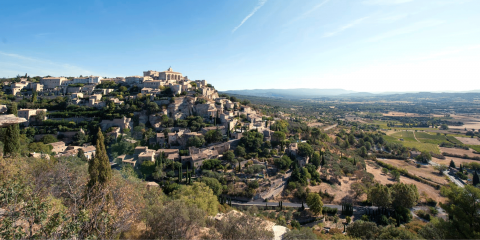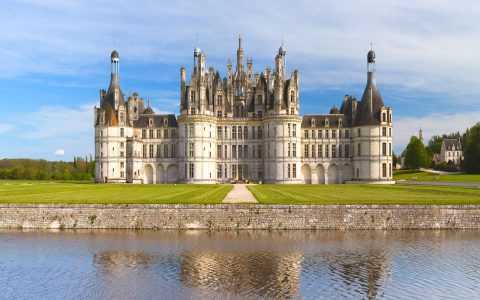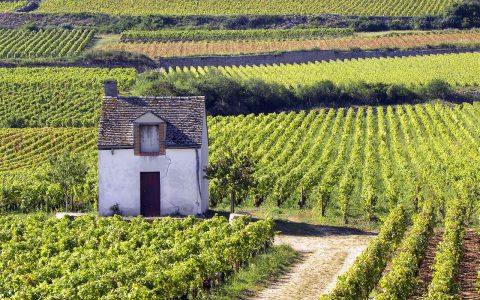Vines 102:
Bordeaux Wine Continued
Like some crus, some wine regions are so grand that a proper explanation can’t be restrained to a single blog post. Here, we continue the exploration of Bordeaux wine we began in Vines 101, and examine one of Bordeaux’s most potent regions, along with appellations from the neighbouring Dordogne.
The Médoc, St-Émilion and Graves
The highest concentration of renowned wines can be found in the area north of Bordeaux known as the Médoc. The blend here is dominated by Cabernet Sauvignon, a late-ripening variety well adapted to the warm gravel soils of the Left Bank of the Garonne. The best-known appellations are Margaux, St-Julien, Pauillac and St-Estèphe. The premier crus, which are the head of the class, are the Châteaux Lafite-Rothschild, Latour, Margaux and the Mouton-Rothschild. The wines of the Médoc are traditionally red, but a few rare whites do exist.
 On the Right Bank of the Dordogne River are the town and appellation of St-Émilion. This area has been producing wines for over 2,000 years—much longer than the Médoc. Fame and high prices didn’t come until relatively recently, however, owing in part to their discovery by certain influential American wine critics… but also to the immense promotional efforts of Bordeaux merchants such as the Moueix family, now owners of Château Pétrus.
On the Right Bank of the Dordogne River are the town and appellation of St-Émilion. This area has been producing wines for over 2,000 years—much longer than the Médoc. Fame and high prices didn’t come until relatively recently, however, owing in part to their discovery by certain influential American wine critics… but also to the immense promotional efforts of Bordeaux merchants such as the Moueix family, now owners of Château Pétrus.
St-Émilion received its own classification in 1955, which, unlike the classification system of 1855, set up a board for periodic review. The two A-class Grand Cru wines of St-Émilion are Château Cheval Blanc and Château Ausone. In neighbouring Pomerol, the undisputed (but unclassified) king is Pétrus.
South of the city of Bordeaux is Graves, named after the high content of gravel in the soil. The only Premier Cru outside the Médoc is Château Haut-Brion, which lies in Pessac, now a suburb of Bordeaux. Further south lie Sauternes and Barsac. Sauternes is home to Château d’Yquem, the most famous and the most expensive sweet wine in the world. A handful of neighbouring châteaux produce wines in the same nectar-like style.
Explore 20,000
Years of Culture
We begin our Bordeaux to Dordogne Biking trip in Bordeaux, where the riding is as smooth as a Château Mouton Rothschild (you’ll understand soon enough). Then, it’s eastward to the Dordogne Valley, land of medieval castles, Cro-Magnon cave paintings and exquisite cuisine.
DETAILED ITINERARYNot-so Bordeaux wine: Bergerac and Cahors
Just east of Bordeaux lie two wine appellations in the Dordogne, Bergerac and Cahors. Bergerac produces both red and white wines. The best reds are the Pécharmants, which are full-bodied, dense wines from vineyards to the northeast, while the white Bergerac secs are simple but pleasant, especially as apéritifs. Just south of Bergerac you’ll find Monbazillac, whose vintners produce a fine, sweet white wine that pairs excellently with foie gras or dessert. All are relatively inexpensive.
“Cahors and Bergerac remain overshadowed by the reputation and volume of Bordeaux.”
Cahors, about 70 kilometres south of Sarlat, received its appellation status in 1971. The principal grape is malbec, or cot, which produces a rather inky, often rustic red wine. Merlot is blended to soften the wine, as is done in Bordeaux with Cabernet. A few very fine wines do exist in Cahors, and the potential exists for more, but in the world’s wine markets, Cahors and Bergerac remain overshadowed by the reputation and volume of Bordeaux.
MORE FROM France + Bordeaux

Grape Harvesting in Ventoux
France
The Top 5 Hiking Routes in Provence and Cote d’Azur
Provence
With Vineyards, Beaches, and Quaint Villages, Île de Ré Is France’s Best-kept Secret
France
Photo Diary: A Sunday in Provence with B&R Guide Tatjana Buisson
Provence
5 Ways to Relive the Renaissance in the Loire Valley
Loire Valley
The Best Luxury Hotels in Paris: From Classic to Contemporary
France
Secrets of the Seine
Île-de-France
6 Reasons Why You Need to Visit Normandy, France
Normandy
10 Best Markets & Shops in Provence
Provence
Bordeaux Nouveau: France’s Coolest City Right Now
Bordeaux
Falling Head Over Heels for Burgundy
Burgundy
The World’s Best: Top 15 Bordeaux Wines
Bordeaux
Rediscovering A Classic: Burgundy
Burgundy
Reading for the Road: Our 5 Favourite Books About Bordeaux
Bordeaux
The Pleasures of Southwestern France
Bordeaux
Normandy’s Showstopper: Mont Saint-Michel
Normandy
Reading for the Road: Our Favourite Books About Normandy
Normandy
Abbaye de la Bussière: English Hospitality in the Heart of France
Burgundy
Secrets of the Loire Lifestyle
Loire Valley


